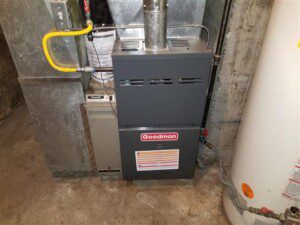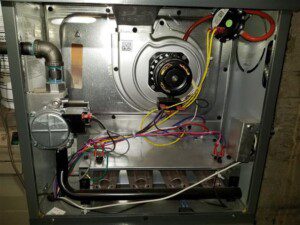
While there are many important parts of a furnace that all work in tandem to make the appliance function properly, the largest component inside of a gas furnace is the heat exchanger. Heat exchangers, which are typically metal tubes or shells, operate by transferring heat from one area to another. Natural gas or propane is ignited and the hot exhaust gas passes from the burners through the heat exchanger. As the metal of the heat exchanger heats up, air from the circulating central air system passes over the metal, heating up and moving the warm air throughout the home.
As a heat exchanger gets older, the chances of the exchanger becoming worn and cracked increases. Cracked heat exchangers are dangerous since the heat exchanger is what separates the hazardous combustion gases from escaping the furnace housing and circulating into the interior of the home. Carbon monoxide is a byproduct of combustion and can be extremely dangerous indoors. Since it is both invisible and odorless, carbon monoxide can be a silent killer.

Cracked heat exchangers are difficult to diagnose since the exchange is typically not visible without disassembling the interior furnace components. As such, the identification of a cracked heat exchanger is not part of a home inspection. One sign of a possible cracked heat exchanger, however, is if the color of the burner flames changes rapidly between orange and blue or flickers a solid orange. Natural gas furnaces in good working order will typically have burners that stay a relatively consistent blue color. If your furnace burners change color rapidly or are a solid orange color, having an HVAC contractor evaluate and service your furnace is recommended.
